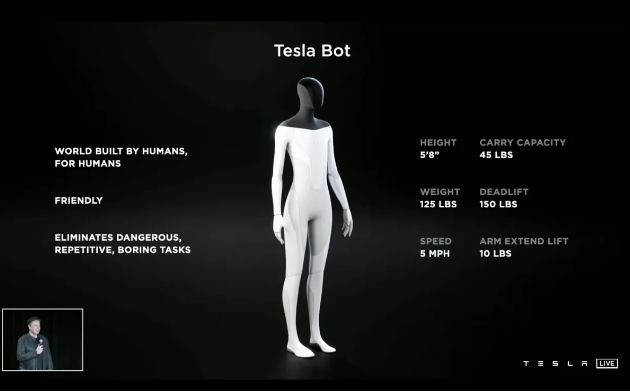After Hemingway’s death, his fourth wife, Mary Welsh Hemingway (left), went through the material he had left at Sloppy Joe’s Bar in Key West, Fla., packed up what she wanted, and gave the rest to longtime friends, Betty and Toby Bruce.Credit…The Toby and Betty Bruce collection of Ernest Hemingway in the Penn State Special Collections Library
Dear Commons Community,
A trove of items left in a Key West bar by Ernest Hemingway, are now part of a new archive at Penn State. It includes four unpublished short stories, drafts of manuscripts and boxes of personal effects.
Below is an article by Robert Elder describing some of the material found.
Tony
————————————————————————————-
The New York Times
What Hemingway Left in Sloppy Joe’s Bar 80 Years Ago!
By Robert K. Elder
(Robert K. Elder is the author or editor of four books about Hemingway including the forthcoming “Mythbusting Hemingway” with Thomas Bevilacqua).
Sept. 21, 2022
In an untitled, three-page short story, Ernest Hemingway casts F. Scott Fitzgerald as a scrappy boxer who leaves the ring battered and disfigured but ultimately victorious.
He sketches out a novel he’ll never write, “A New Slain Knight,” calling it a “picaresque novel for America” that will follow his protagonist through a prison escape, a bank robbery and noirish double-crosses.
Wearing his American Red Cross uniform and smiling at the camera, an 18-year-old Hemingway huddles in a trench with Italian soldiers during World War I, just days before he was wounded by a mortar shell and machine-gun fire, an experience that inspired him to write “A Farewell to Arms.”
And in a notebook entry from 1926, there is a three-page meditation on death and suicide — 35 years before he took his own life.
The items, part of the most significant cache of Hemingway materials uncovered in 60 years, are in a new archive recently opened to scholars and the public at Penn State University. Called the Toby and Betty Bruce Collection of Ernest Hemingway, the material includes four unpublished short stories, drafts of manuscripts, hundreds of photographs, bundles of correspondence and boxes of personal effects that experts say are bound to reshape public and scholarly perception of an artist whose life and work defined an era.
Carl Eby, the president of the Ernest Hemingway Foundation and Society, said he was “truly floored” by the bounty of material from an artist best known for the taut, understated writing of works like “The Sun Also Rises” and “The Old Man and the Sea,” dispatches from World War II and the Spanish Civil War and his larger-than-life persona as a hard-drinking, hard-working outdoorsman.
“Hemingway reinvented modern American prose and the short story. His best work is deeply moving and rich in meaning and psychological complexity,” Eby, who is a professor of English at Appalachian State University, said. “He seemed to live on an epic scale, in fascinating times, in fascinating places, and because he was mythologized during his own lifetime, his public image to this day — for better or worse — retains all the allure and power of the mythic. There’s enough new material here to generate new biographical and interpretive insights for years to come.”
For years, most Hemingway scholars could only salivate about the Bruce collection, uncertain of its exact contents or even location. What they did know was that in 1939, after his second marriage crumbled, Hemingway, a notorious pack rat, left his belongings in the storeroom of Sloppy Joe’s Bar, his favorite watering hole in Key West, Fla. He never returned to collect them.
After Hemingway’s death, his fourth wife, Mary Welsh Hemingway, went through the material, packed up what she wanted, and gave the rest to longtime friends, Betty and Telly Otto Bruce, known to his friends as Toby. Toby Bruce was part of Hemingway’s inner circle for years, not only as his right-hand man, but also as his contractor, mechanic and sometime chauffeur.
The trove of materials spent decades uncataloged in cardboard boxes and ammo storage containers, surviving hurricanes and floods. Years ago, Betty and Toby’s son, Benjamin Bruce (known as Dink) and a local historian, Brewster Chamberlin, began creating an inventory of the haul in consultation with the Hemingway scholar Sandra Spanier. It was here, amid bullfighting tickets, checks, newspaper clippings and letters from his lawyer, family members and friends like the writer John Dos Passos and artists Joan Miró and Waldo Peirce, that they discovered a stained brown notebook. Inside was Hemingway’s first known short story, about a fictional trip to Ireland, written when he was 10 years old.
After Hemingway’s death, his fourth wife, Mary Welsh Hemingway (left), went through the material he had left at Sloppy Joe’s Bar in Key West, Fla., packed up what she wanted, and gave the rest to longtime friends, Betty and Toby Bruce.Credit…The Toby and Betty Bruce collection of Ernest Hemingway in the Penn State Special Collections Library
When that find was revealed in 2017, Dink Bruce told The New York Times that he hoped his family’s collection would find a permanent archival home. Spanier, the general editor of the Hemingway Letters Project and an English professor at Penn State, thought so too. For the next five years, she worked to bring the archive to the university, which purchased it in October 2021 for an undisclosed sum.
“I did have a sense of responsibility to make this happen, both as someone who had incredible affection and respect for Dink and Brewster, but also as a scholar,” Spanier said. “This is a gold mine for a scholar.”
The archive spans Hemingway’s life and even stretches past his death. In one box, labeled “Ernest’s baby treasures” in his mother’s handwriting, is a lock of his hair, his leather baby bootees and the head of his favorite toy, “Doggie,” which he slept with until age 6 and a half. In another folder, a telegram asks Toby Bruce to be a pallbearer at the author’s funeral. There is also Hemingway’s American Red Cross uniform — the one he wasn’t wearing when wounded — which rests in a box meant for a wedding dress.
“In terms of just being a fan, it gives me chills to touch his WWI uniform or to page through his letters,” said Spanier. “Just to touch the paper, there’s an electric connection that you get there personally, as well as intellectually as a scholar.”
In one newly discovered letter from the summer of 1945, Hemingway writes to Bruce about his son Jack, nicknamed Bumby, who had recently been released from a German prisoner of war camp during World War II.
“He is in o.k. shape. The wounds were plenty bad. One in the shoulder you could put your fist into. Another through fore-arm and another through shoulder,” Hemingway wrote. “He had six months of nothing but soup and a hell of a time all around.”
The most haunting piece of the archive comes from a notebook dated March 6, 1926.
“When I feel low I like to think about death and the various ways of dying and I think probably the best way, unless you could arrange to die some way while asleep, would be to go off a liner at night,” wrote Hemingway, then 26 and just seven months away from publishing his blockbuster novel “The Sun Also Rises.” While the scholar Carlos Baker quoted this section in his 1969 biography, “Ernest Hemingway: A Life Story,” the notebook itself was hidden away for years. What Baker didn’t include in his book is just as revealing.
Hemingway, in his tight penmanship, explores various means of death for three pages, writing: “For so many years I was afraid of death and it is very comfortable to be without that fear. Of course it may return again at any time.”
All of it is tempered, perhaps, by a pencil notation that Hemingway wrote later: “This is [expletive].”
Hemingway wrote these passages two years before his father killed himself, suggesting that the author’s own suicidal ideation started earlier and was perhaps deeper than scholars previously knew. In 1961, the Pulitzer- and Nobel-Prize-winning writer killed himself with a shotgun at his home in Ketchum, Idaho, just weeks before his 62nd birthday.
The collection isn’t all darkness.
In a series of photos from February 1936, Hemingway referees sweaty teenagers in a boxing match during a good will exhibition between Cubans and Americans for Key West’s “Week of Joy” commemorating Cuban independence. In another, he grins in a candid shot with fellow author Sinclair Lewis ( “Babbitt,” “Elmer Gantry”) during a chance meeting in 1940. He can be seen beaming in the negatives from his wedding to his first wife, Elizabeth Hadley Richardson, on Sept. 3, 1921, in Horton Bay, Mich.
The collection not only allows access to things Hemingway wrote and touched and wore — it also allows scholars to see through his eyes.
There are dozens of tiny, two-by-three-inch snapshots that Hemingway took on his 1933-34 safari in British East Africa (now Kenya) and Tanganyika (now Tanzania). With his Graflex camera, Hemingway captured giraffes on the African plains, a pair of wary-looking elephants in the brush and an unguarded shot of his second wife, Pauline Pfeiffer, surveying the landscape with their guides. Hemingway chronicled the trip in a series of articles for Esquire magazine, and it served as the basis for his 1935 nonfiction book “Green Hills of Africa.”
“It’s a little flash of time travel. History comes alive for a minute,” Spanier says. “You can see exactly what he was experiencing on a given day.”
One of the most amusing finds is the short story about Fitzgerald as a fictional pugilist. The upstart Kid Fitz wins his match and “appeared in good condition after his grueling battle,” Hemingway writes. “His only marks were a strangulated hernia, a missing nose and two black eyes.”
Famously, Hemingway and Fitzgerald had a relationship that could be euphemistically described as “complicated.” The pair met in Paris in 1925 just after Fitzgerald published his masterpiece, “The Great Gatsby.” A more experienced and connected writer, Fitzgerald championed Hemingway’s work while offering him career and editing advice. He introduced Hemingway to his editor, Maxwell Perkins at Charles Scribner’s Sons, which ended up publishing his most important works.
The friendship soured, however, as Fitzgerald’s star waned and Hemingway took potshots at him in print. Fitzgerald also suffered the indignity of dying first, and Hemingway wrote in his memoir, “A Moveable Feast,” that Fitzgerald’s wife, Zelda, criticized the size of his manhood. Hemingway, according to his telling, had to reassure Fitzgerald that he was perfectly normal.
But this boxing story is playful and affectionate, though still biting. Hemingway casts Fitzgerald as a young boxing star who “deserves to rank” with other “boxers” including Battling Milton (John Milton), K.O. Keats (John Keats), Spike Shelley (Percy Shelley) and Wild Cat Wordsworth (William Wordsworth), among others.
“It’s making fun of Fitzgerald’s ineptitude in physical matters,” said Kirk Curnutt, a professor and chair of English at Troy University in Alabama, who also serves as the executive director of the F. Scott Fitzgerald Society.
“Hemingway clearly felt he’d surpassed Fitzgerald both in literary and physical virility,” he added. “But in a way, it’s an odd admission of delusion. Later in life, Hemingway would claim he could take world-renowned writers in the ring with the same sort of obliviousness he’s attributing to Kid Fitz here as he gets his nose knocked off.”
Because the story is undated, it’s difficult to fix its place in their relationship, although Curnutt thinks it might be related to a famous bone of contention between the two.
In 1929, Fitzgerald was the timekeeper in a sparring match between Hemingway and the Canadian novelist Morley Callaghan, who years earlier served on the staff at The Toronto Star with Hemingway. The match turned bloody, however, and took on a more serious tone when Callaghan landed several punches. Hemingway, who considered himself something of a boxer, claimed that he was battered during an extra minute in the round because Fitzgerald lost track of time.
“Hemingway never quite got over that extra minute,” said Curnutt. “He later stretched it out to 13 minutes.”
Two other Hemingway story fragments are “Alice in Wonderland”-style tales — actually featuring Alice, Tweedledee and Tweedledum — that savagely lampoon President Franklin D. Roosevelt’s New Deal. The 10 pages of disconnected tales make fun of F.D.R.’s economic policy as Alice tries to make sense of the “Oddity Dollar” based on a loan she never applied for. These pages are new segments of an existing Alice story already housed at the John F. Kennedy Presidential Library and Museum in Boston, home of the largest collection of Hemingway materials.
“The ‘Alice’ portions remind us not only of how opposed Hemingway was to the New Deal but just how much fun he could have with wordplay,” Curnutt said.
The archive is opening during a moment when Hemingway is enjoying a bit of a cultural renaissance. Last year, he was the subject of a lavish, three-part documentary by Ken Burns and Lynn Novick, and Simon & Schuster has been releasing expanded library editions of his work. Hemingway continues to inspire movies, comic books, podcasts and TV shows. His last unfilmed novel, “Across the River and into the Trees,” was shot in Venice during the height of the Covid pandemic and stars Liev Schreiber. And Robert Zemeckis, the director of films including “Forrest Gump” and “Cast Away,” has agreed to direct a limited television series based on Hemingway’s life that is being shopped to studios and streamers.
As more of Hemingway’s early work comes into the public domain and his exposure to new readers increases, these materials will undoubtedly add to Hemingway’s legacy. They could help flesh out a figure who fell victim to his own masculine mythmaking. Part of that myth points to a darker side of Hemingway — malignant competitiveness, callous anti-Semitism, and a volcanic temper — that often overshadows his work and makes him the poster boy for toxic masculinity. It can also obscure a fuller understanding of Hemingway’s life that includes a generational struggle with depression, brain trauma and the author’s own gender identity — all facets of Hemingway detailed in recent scholarship. (He explored gender reversals with all four of his wives and referred to himself as Mary’s “girl” during their marriage and periodically called himself “Catherine” or “Kathrine.”)
“The Hemingway that you know from high school is not the Hemingway we know today,” Eby, the president of the Ernest Hemingway Foundation and Society, said. “The hyper-machismo was real, but it was less than half the picture. Hemingway’s sexuality and gender identity were much more fluid and complex than the general public realizes. The man was a thousand times more interesting and nuanced than the myth would suggest.”
While future scholars will mine the archive to discover secrets and insights, even a cursory review of the materials is impressive. Spanier, the Hemingway scholar at Penn State, said the process of annotating and dating items “has been just like an Easter egg hunt.”
There’s a check for $10 to Arnold Gingrich, the co-founder of Esquire magazine, to settle a boxing bet. Hemingway’s entire fishing log from 1934-35 — which includes what he was doing, what he saw, and who he was with — is here, too. The archive includes two partial typescripts for his 1932 nonfiction work about bullfighting, “Death in the Afternoon.” In an excised passage, Hemingway imagines a reader who questions if it’s appropriate to write about an amusement like bullfighting with the threat of civil war in Spain, when other writers were turning their attention to politics.
It’s all enough to keep scholars and the Hemingway-fascinated busy for decades.
“It fleshes out his genius as an artist, but also his everyday life,” Spanier said. “Usually, he’s a one-dimensional character in pop culture, but this archive adds a depth and nuance and complexity to our knowledge of Hemingway, so he’s not such a cartoon character. The artifacts all illuminate each other. Every object tells a story.”

Hemingway in Key West in early 1931, several months after breaking his arm in a car accident in Montana. Credit…The Toby and Betty Bruce collection of Ernest Hemingway in the Penn State Special Collections Library
/cloudfront-us-east-1.images.arcpublishing.com/dmn/SMKHMGJAB3KPAV3XW6H6OV3LPA.jpg)












